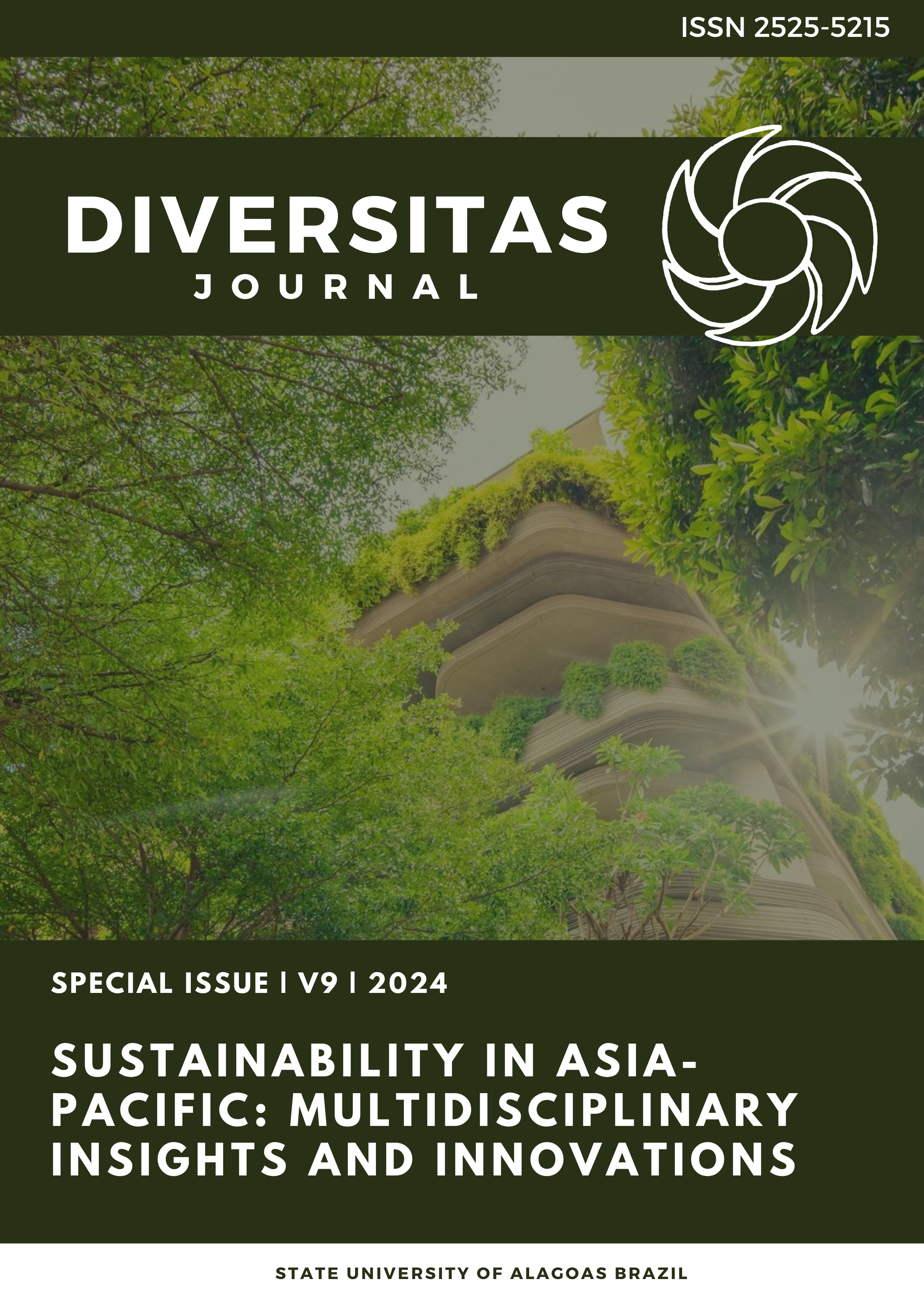Political Branding: The use of campaign color as symbolism of platforms among the presidential candidates in the 2022 elections
DOI:
https://doi.org/10.48017/dj.v9iSpecial1.2831Keywords:
political branding, presidential campaign, Philippine electionsAbstract
In a very complex nature of politics, color serves as a low-level heuristic for voters, especially the use of campaign color as a symbolism of platforms. This study sought to determine the level of agreement on the universal meaning of the different colors chosen by the Presidential candidates during the 2022 national elections; the level of agreement if the political colors of the presidential candidates and its representation to their political platforms; and if these chosen political colors correspond to the platforms of the presidential candidates among the students of the School of Teachers and Liberal Arts of the University of Baguio. A mixed method with a self-constructed questionnaire using the Likert Scale to determine the level of agreement among the 143 respondents and an interview with 8 informants among the students was used in this study. The study revealed that the color Red is the most misinterpreted color because of its historical and psychological connotations which led to its negative symbolism. While both Pink and Blue, showed a positive result because of their psychological, cultural, and political aspect. Furthermore, all colors aligned with their platforms except the color Red by Marcos with his platform about Unity. Additionally, the presidential candidates' platforms were based on their personal and political factors. Overall, the research suggests that there’s still no established meaning of political colors in our country and that voters still take issue with what the colors truly represent.Metrics
References
Aslam, M. M. (2006). Are You Selling the Right Colour? A Cross‐cultural Review of Colour as a
Marketing Cue. Journal of Marketing Communications, 12(1), 15–30. https://www.tandfonline.com/doi/abs/10.1080/13527260500247827
BBC. (2012). Profile: Thailand’s Reds and Yellows. BBC News. https://www.bbc.com/news/world-
asia-pacific-13294268
Burlington Press. (2020). How Color Theory Can Propel Your Political Campaign to the Podium.
Business World. (2022). Five Presidential Candidates Lay Down Specifics of their Plans.
Castellon, J. (2016). Political Branding in Chaotic Times of Election Campaigning. My
Brand Bureau. https://justcastellon.blog/tag/political-branding-in-the-philippines/
Castro, M. (2021). From Pink To Yellow—The Meaning Behind Party Colors. MEGA Magazine. https://mega.onemega.com/the-meaning-behind-party-colors/
Center for Civic Design. (2016). Voter guides: Using Color Effectively. Retrieved August 11, 2022, from
https://civicdesign.org/voter-guides-using-color-effectively/?fbclid=IwAR1q7wf77TeUef
Cerulo, K. (1995). Identity Designs: The Sights and Sounds of a Nation. New Brunswick. New Jersey:
Rutgers University Press, 23(2). https://sociology.rutgers .edu/faculty-book/841-identity-designs-the-sights-and-sounds-of-a-nation-the-arn Old-and-caroline-rose-book-series-of-the-american-sociological-association
Cuervo-Cazurra, A., Doh, J. P., Giuliani, E., Montiel, I., & Park, J. (2022). The United Nations’
Sustainable Development Goals: Pros and Cons for Managers of Multinationals. AIB Insights, 22(1), 1-6. https://insights.aib.world/article/32530-the-united-nations-sustainable-development-goals-pros-and-cons-for-managers-of-multinationals
Del Rosario, L. Q. (2021). The 2022 Elections' Primary Colors. Miriam College News and Events.
https://www.mc.edu.ph/news/ArticleID/4168/2022-elections-primary-colors
Dimaano, T. Y. (2022). Painting PH: The Colors of Philippine Politics. UPLB Perspective.
https://uplbperspective.org/2022/04/07/painting-ph-the-colors-of-philippine-politics/?fbclid=IwAR1eY6mJ9iIVRzT62Ju5ECvDctBoKXqHZdIRyf PV-XdAXusgMh1DJPXxxS4
Elliot, A. J., & Maier, M. A. (2012). Color-in-context theory. Advances in experimental social
psychology, 45, 61–125. https://psycnet.apa.org/record/2012-12724-002
Fine, G. A., Montemurro, B., Semora, B., Stalp, M. C., Claussen, D. S., & Sierra, Z. (1998). Social Order through a Prism: Color as Collective Representation. Sociological Inquiry, 68(4), 443-57. https://academic.csuohio.edu/kneuendorf/frames/color/Fine1998.pdf
Gill, G., & Angosto-Ferrandez, L. F. (2018). Introduction: Symbolism and Politics. Politics, Religion &
Ideology. Politics, Religion & Ideology, 19(4), 429–433. https://www.tandfonline.com/doi/full/10.1080/21567689.2018.1539436
GMA News Online. (2022). Election Results. Retrieved August 11, 2022, from
https://www.gmanetwork.com/news/eleksyon2022/
Ioana, A. (2017). Why Most People’s Favorite Color is Blue. Medium. https://medium.com/the-
peruser/why-most-peoples-favorite-color-is-blue-bd84fc4e4dfb
Kanchier, C. (2018). What the Colors You Wear Say About You! The Psychology of Colour in Business
Photography. https://www.verveportraits.com.au/blog /the-psychology-of-colour-in-business-photography/
Killip Jr., A. G. (2021). Traces of Ato as a Judicial Institution in the Lupon of Talubin, Bontoc, Mt.
Province. International Journal of Management, Entrepreneurship, Social Science and Humanities, 4(1), 76–95. https://doi.org/10.31098/ijmesh.v4i1.582
Klein, S. (2018). The Fading of a Political Colour. Goethe-Institut.
Kuniecki, M., Pilarczyk, J., & Wichary, S. (2015). The color red attracts attention in an emotional
context. An ERP study. Frontiers in Human Neuroscience, 9. doi:10.3389/fnhum.2015.00212
Marini, L. (2017). Red Parties and Blue Parties. The Politics of Party Colours: Use and Perception of
Non-Verbal Cues of Ideology. 1 - 19. https://www.psa.ac.uk/sites/default/files/conference/papers/2017/Marini_PSA2017_Colours_0.pdf
Monroe, A. D. (1983). American Party Platforms and Public Opinion. American Journal of Political
Science, 27(1), 27-42. https://doi.org/10.2307/2111051
Palatino, M. (2022). Introducing the Colors of the Philippine Election. The Diplomat.
https://thediplomat.com/2022/03/introducing-the-colors-of-the-philippine-election
Patag, K. J. (2022). It's 'Unity, Unity, Unity' for UniTeam's Presidential Bet Marcos.
Philstar Global. https://www.philstar.com/headlines/2022/02/09/2159653/Its-unity-unity-unity-uniteams-presidential-bet-marcos
Super Color Digital. (2020). The Meaning of the Color Blue. https://www.supercolor.com/blog/the-
meaning-of-the-color-blue/?fbclid=IwAR2
KWo1LA0ysucNThuPgkXPMv5cGLwzxW3NhWdRKikWUJt2l_laSgDAS-F8
United Nations Department of Global Communications. (2020). Sustainable Development Goals.
Guidelines For The Use of The SDG Logo Including The Colour Wheel, and 17 ICONS., 67 - 68.
https://www.un.org/sustainabledevelopment/wp content/uploads/2019/01/SDG_Guidelines_AUG_2019_Final.pdf
Vote Pilipinas. (2022). Presidential and Vice Presidential candidates. Retrieved August 11, 2022, from
https://votepilipinas.com/our-campaigns-cpd.html
Wadsworth, C. (2014). Political ‘Brand’ Colours. The Fount. Retrieved from
https://www.thefount.co.nz/articles/political-brand-colours?fbclid=IwAR3AahJN
qk388o_Iwa9d_DF-6CqoI2QwGcG0LjZgTmpA0KkW4WWF-X3Ekvc
Welle, D. (2022, April 28). Philippine elections: The many colours, and their significance. The Indian
Express Journalism of Courage. https://indianexpress .com/article/explained/philippines-elections-colour-politics-explained-7891410/
Downloads
Published
How to Cite
Issue
Section
License
Copyright (c) 2024 Christal Jane Alturas, Jessica Khendy Balanza, Precious Lyca Cabalse, Khrist Jaira Ignacio, Alexander Jr Killip, Khristine Claire Nicdao

This work is licensed under a Creative Commons Attribution 4.0 International License.
The Diversitas Journal expresses that the articles are the sole responsibility of the Authors, who are familiar with Brazilian and international legislation.
Articles are peer-reviewed and care should be taken to warn of the possible incidence of plagiarism. However, plagiarism is an indisputable action by the authors.
The violation of copyright is a crime, provided for in article 184 of the Brazilian Penal Code: “Art. 184 Violating copyright and related rights: Penalty - detention, from 3 (three) months to 1 (one) year, or fine. § 1 If the violation consists of total or partial reproduction, for the purpose of direct or indirect profit, by any means or process, of intellectual work, interpretation, performance or phonogram, without the express authorization of the author, the performer, the producer , as the case may be, or whoever represents them: Penalty - imprisonment, from 2 (two) to 4 (four) years, and a fine. ”


















